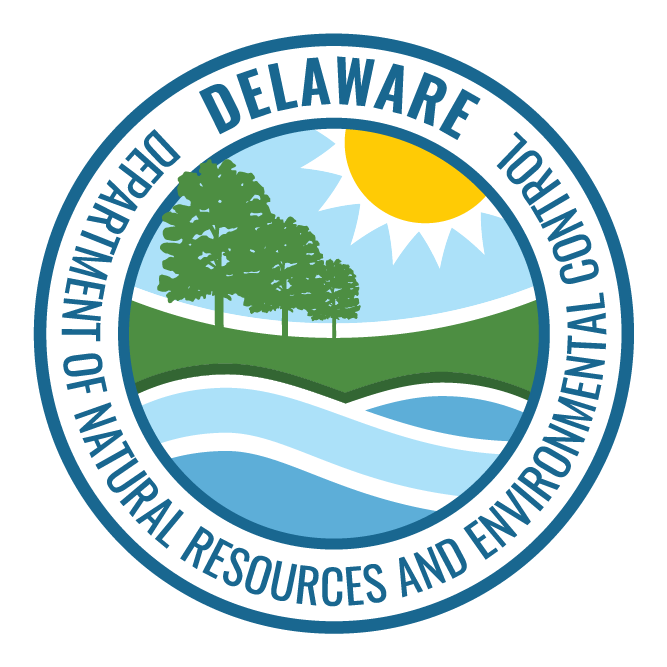Pages Tagged With: "beaches"
Application for a Permit for Construction Seaward of the DNREC Building Line
Kurt Wilber has applied for a permit for construction seaward of the DNREC Building Line for a property in Dewey Beach.Application for a Permit for Construction Seaward of the DNREC Building Line
David Heffernan has applied for a permit to build a concrete dune crossover for both vehicles and pedestrians on a lot in Prime Hook.Application for a Permit for Construction Seaward of the DNREC Building Line
The Sea Del Estates Homeowners Association has applied for a permit for construction seaward of the DNREC Building Line to scrape sand from the beach to rebuild the dune in Sea Del Estates, oceanside in North Bethany.Application for a Permit for Construction Seaward of the DNREC Building Line
The Cape Shores Homeowners Association proposes to place 34,000 cubic yards of sand on the beach at Cape Shores, in Sussex County.Shoreline Public Access
Starting in the summer of 2026, Delaware communities along Atlantic Ocean and Delaware Bay shorelines will need approved shoreline public access plans before beginning beach nourishment, maintenance or improvement projects using public funds. To help them meet that requirement, DNREC’s Shoreline and Waterway Management Section (SWMS) has developed guidelines for developing shoreline public access plans.Application for a Permit for Construction Seaward of the DNREC Building Line
Maria Vershel has applied for a permit to lower the crest elevation of a dune on lots 21 and 22 in Sandpiper Village, in Sussex County.Economic Analysis for Shoreline Management
The Department of Natural Resources and Environmental Control (DNREC) has released a study that investigates the economic benefits of beach nourishment and begins to explore a more equitable policy to share the cost of these projects with the people who benefit from them. [button type=”primary” block=”true” link=”https://documents.dnrec.delaware.gov/Watershed/Shorelines/economic-analysis/Full-Report.pdf”CoastSnap DE
Visitors to two of Delaware’s most popular beaches can help collect valuable data needed to monitor Delaware’s changing coastline. And all they need is their smartphone. CoastSnap DE is part of a global community science project that places simple camera mounts at beaches. Visitors are invited to takeApplication for a Permit for Construction Seaward of the DNREC Building Line
Andrew Karron has applied for a permit to bring in sand to level a lot and replace eroded sand in South Bethany.Division of Watershed Stewardship
The DNREC Division of Watershed Stewardship manages and protects the state’s soil, water and coastlines. It uses a comprehensive array of watershed-based programs to ensure proper stewardship of Delaware’s natural resources. Watershed Assessment and ManagementApplication for a Permit for Construction Seaward of the DNREC Building Line
Maureen Makarechi has applied for a permit for construction seaward of the DNREC Building Line to bring in sand to fill eroded and low spots on a lot in South Bethany.Application for a Permit for Construction Seaward of the DNREC Building Line
A&A Landscaping, Hardscape and More LLC has applied for a permit for construction seaward of the DNREC Building Line to bring in sand to level a lot in South Bethany.Hundreds of Coastal Guardians Unite to Strengthen Dunes Along Delaware Beaches
Every March for more than three decades, hundreds of volunteers have gathered at beaches along the Delaware Bay and Atlantic Ocean to plant Cape American beach grass.Application for a Permit for Construction Seaward of the DNREC Building Line
The Sea Colony Recreational Association has applied for a permit to mechanically scrape sand from the beach to rebuild the dunes on Sea Colony.American Oystercatchers
American oystercatchers are black and white shorebirds with bright orange beaks that feed and nest on the beach. The Beach-Nesting Bird Program monitors the population and productivity of American oystercatchers in Delaware. An American oystercatcher incubating a nest. (Photo: Henrietta Bellman) These birds begin arriving in Delaware in March, startLeast Terns
Least terns are the smallest species of tern in North America, with an orange-yellow beak and mask-like black markings on the head. The Beach-Nesting Bird Program monitors the population and productivity of least terns in Delaware. A male and female least tern conducting a courtship ritual. The male presents the female withBeach-Nesting Birds
Dwindling shorebird populations have landed several species on Delaware’s Endangered Species List. The DNREC Beach-Nesting Bird Program monitors the endangered breeding shorebirds, provides habitat protection, and provides information to the public about beach-nesting species. The Beach-Nesting Bird Program primarily focuses on three species — Piping Plovers, American Oystercatchers and LeastDelaware Inland Bay and Delaware Bay Coast Coastal Storm Risk Management Study
The Coastal Storm Risk Management Study of the Delaware Inland Bays and Delaware Bay Coast (known as the Back Bay Study) will explore potential storm risk management problems and flood risk reduction solutions. It will recommend risk reduction solutions that increase community resilience to coastal storms. Statement fromCoastal Construction Permits
The DNREC Division of Watershed Stewardship manages permits and approvals under the regulatory programs that govern coastal construction in Delaware.Contact Us
Jennifer Luoma Pongratz 302-608-5502
Questions and Answers
A collection of common questions, and answers, about the coastal construction regulatory program. The Division of Watershed Stewardship’s Shoreline and Waterway Management Section has a series of maps that show the location of the Building Line.Adopt-a-Beach
DNREC’s Adopt-A-Beach program is a partnership between the Department and Delaware volunteers, working in tandem to protect and enhance Delaware’s beaches.Contact Us
Anthony DeSio Environmental Scientist 302-608-5500
Beach Grass Planting
Volunteers are the backbone of Delaware’s shoreline stabilization. Every spring since 1990, except when pandemic conditions prevented it, dedicated volunteers have stabilized Delaware’s sand dunes by planting more than 5 million stems of Cape American beach grass along ocean and bay beaches. The 2026 Annual Beach Grass PlantingYou Can Help Protect Beaches and Dunes
There are several ways property owners and visitors can preserve and protect beaches and dunes.Contact Us
Shoreline and Waterway Management Section 302-608-5500
Beaches and Shorelines
The DNREC Shoreline and Waterway Management Section works to maintain and improve Delaware’s beaches, shorelines and waterways.Contact Us
Shoreline and Waterway Management Section 302-608-5500




